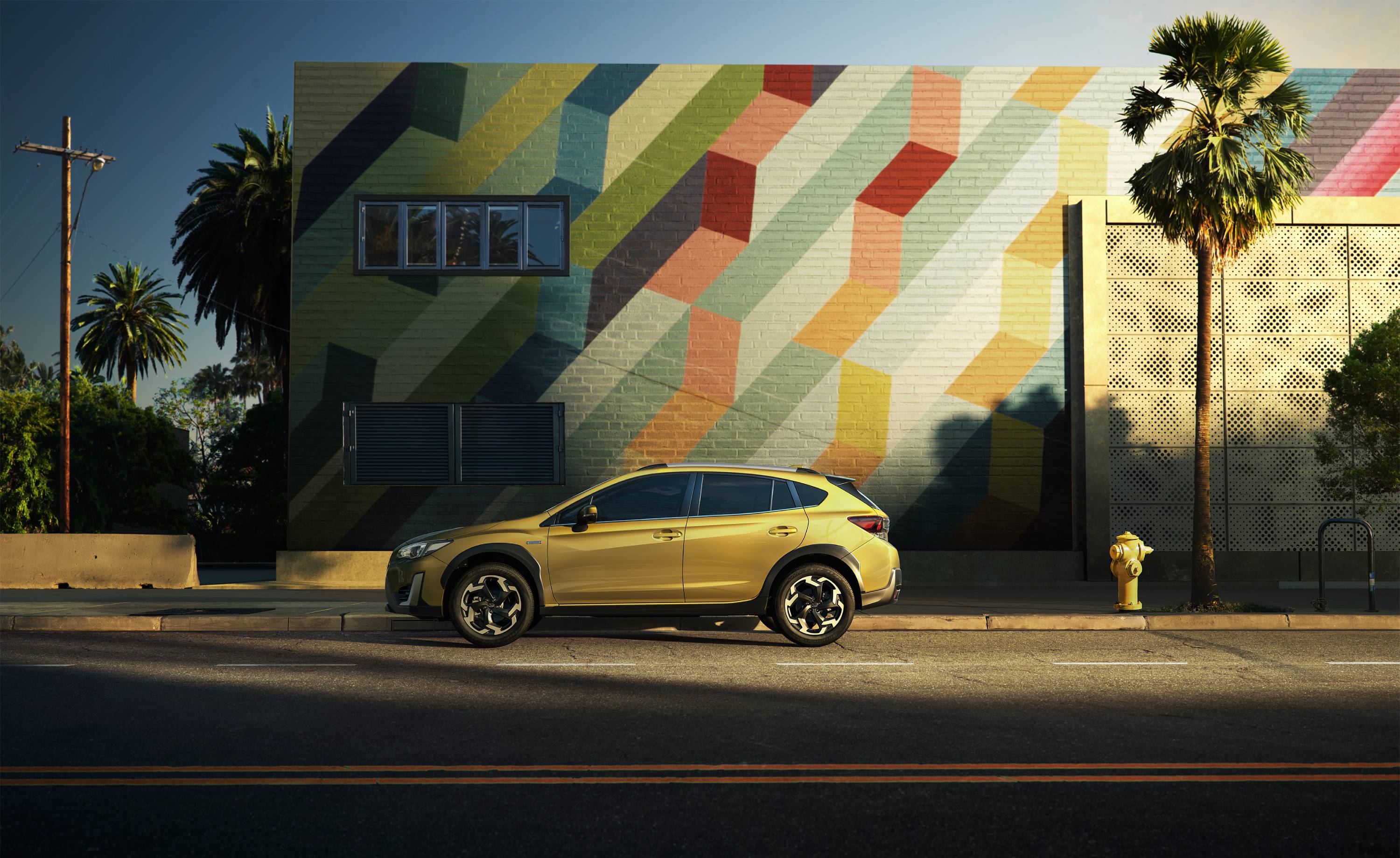What next for Subaru in the electric age?
Subaru’s soon-to-be rebadged XV e-Boxer plug-in hybrid gets our thumbs-up, and its Solterra EV is coming soon. But with the storied Japanese car maker’s model lines pruned to a bare minimum, can it make it intact into the electric age?

With a new EV on the near horizon, we sampled Subaru’s smallest car, the XV e-Boxer plug-in hybrid, to see what the company has to offer the fast-changing world of car culture. In many respects, Subaru is a brand without a solid identity. Spun off from aircraft manufacturer Fuji Heavy Industries after the Second World War, the company was named after the Pleiades star cluster – hence the stylised six-star badge.

Early models included the cult Subaru 360, a sort of Japanese response to the VW Beetle that conformed to the country’s keijidōsha (light car) rules, introduced in 1949 to ensure there would always be light, compact, affordable transportation.

In the decades that followed, Subaru expanded around the world, taking on a relatively different identity in each new territory. In Japan, it remains active in the Kei car market with the Justy minivan. In Europe, the company became known for sporting four-wheel drive models that, for a brief period, dominated the World Rally Championship at the tail end of the 1990s.
In the US, Subarus have evolved a quirky, leftish image, thanks to their combination of go-anywhere ability and small size (when compared to domestic models).

Here in the UK, the Subaru line-up has recently been pared back to a bare minimum. The company offers two self-charging hybrids, the Subaru XV e-Boxer and Forester e-Boxer, alongside the conventionally powered Outback and an ICE version of the Forester. The company’s all-new Solterra EV was unveiled last year but is not due to go on sale until later in 2022.

The forthcoming Subaru Solterra EV
From these three vehicles, Subaru covers a number of bases, describing itself as a purveyor of estate cars, crossovers, and SUVs, not to mention plug-in hybrids.
In recent years it has forged a partnership with Toyota, developing cars that were effectively identical but badged differently, like the Toyota GT86 and Subaru BRZ. Likewise, the Solterra shares many parts with Toyota’s bZ4X EV.
Receive our daily digest of inspiration, escapism and design stories from around the world direct to your inbox.

XV e-Boxer plug-in hybrid interior
Is Subaru spread too thinly, or are these cars genuinely capable of playing so many roles? Based on our experience of the XV e-Boxer, we’d offer a qualified yes to the latter. The XV has a Tonka Toy-like appearance, robust and unbreakable-looking with its chunky wheel arches, big bumpers and raised ride height. It gets the job done without being especially memorable; this unpretentious capability is all part of Subaru’s understated charm.

XV E-Boxer interior
Despite its rough and ready image, the XV excels in being smaller and wieldier than a standard-issue SUV, even if the ride height isn’t quite as lofty. The fixtures and fittings give off an air of quiet reliability; this is a car that feels like it could last for decades. In fact, the XV is just about to be re-badged and re-styled, and the car will be known as the Crosstrek from 2023. The interior is being given a major overhaul with a new screen and surround camera system, while there are also subtle shifts to the front and rear styling.
Whether as the XV or Crosstrek, the Subaru is a no-nonsense, old-school choice of transportation. Unlike many softer, style-driven rivals, its reputation as an off-roader is well deserved. This month, Subaru celebrates half a century of churning out four-wheel drive vehicles, substantially longer than, say, Audi’s Quattro models. The big advantage of EVs, however, is that they do away with the complex mechanical systems required to deliver power to all four wheels. Stripped of its core technology, the Solterra needs to bring something different to the table in order to keep Subaru’s star(s) aloft.
INFORMATION
Subaru XV 2.0i e-BOXER, from £33,195
Jonathan Bell has written for Wallpaper* magazine since 1999, covering everything from architecture and transport design to books, tech and graphic design. He is now the magazine’s Transport and Technology Editor. Jonathan has written and edited 15 books, including Concept Car Design, 21st Century House, and The New Modern House. He is also the host of Wallpaper’s first podcast.
-
 ‘I want to bring anxiety to the surface': Shannon Cartier Lucy on her unsettling works
‘I want to bring anxiety to the surface': Shannon Cartier Lucy on her unsettling worksIn an exhibition at Soft Opening, London, Shannon Cartier Lucy revisits childhood memories
-
 What one writer learnt in 2025 through exploring the ‘intimate, familiar’ wardrobes of ten friends
What one writer learnt in 2025 through exploring the ‘intimate, familiar’ wardrobes of ten friendsInspired by artist Sophie Calle, Colleen Kelsey’s ‘Wearing It Out’ sees the writer ask ten friends to tell the stories behind their most precious garments – from a wedding dress ordered on a whim to a pair of Prada Mary Janes
-
 Year in review: 2025’s top ten cars chosen by transport editor Jonathan Bell
Year in review: 2025’s top ten cars chosen by transport editor Jonathan BellWhat were our chosen conveyances in 2025? These ten cars impressed, either through their look and feel, style, sophistication or all-round practicality